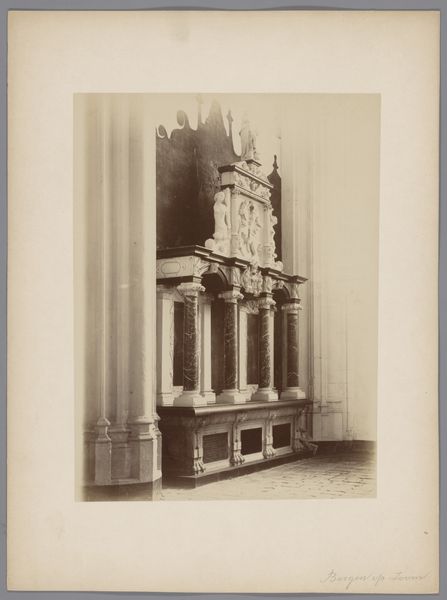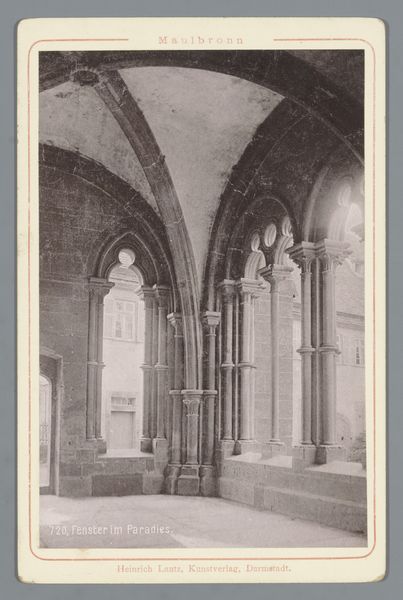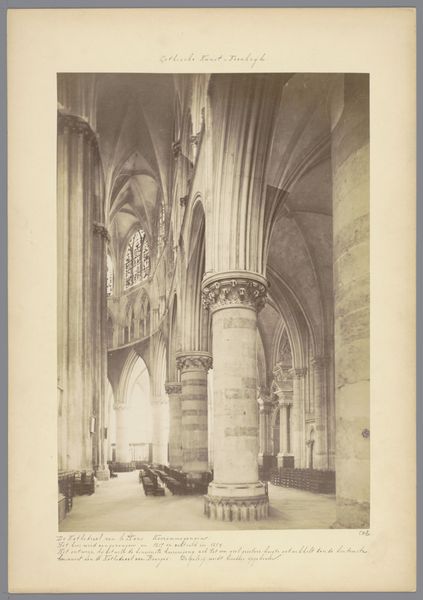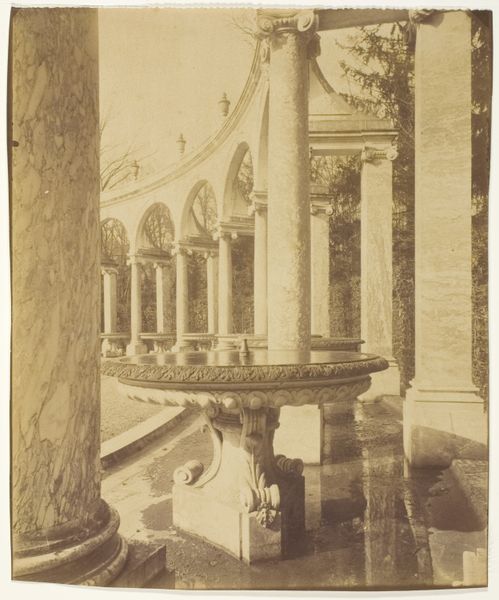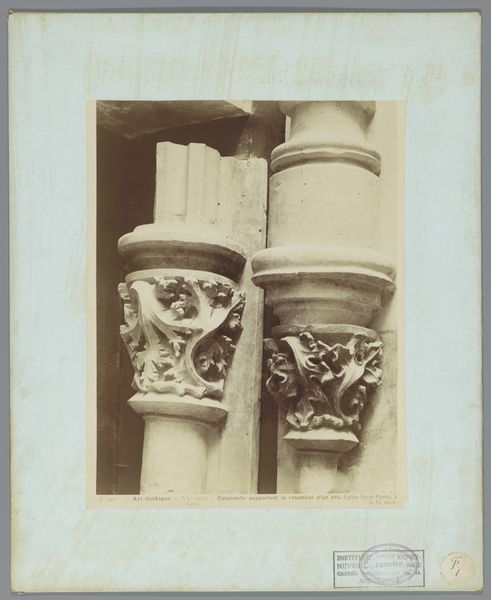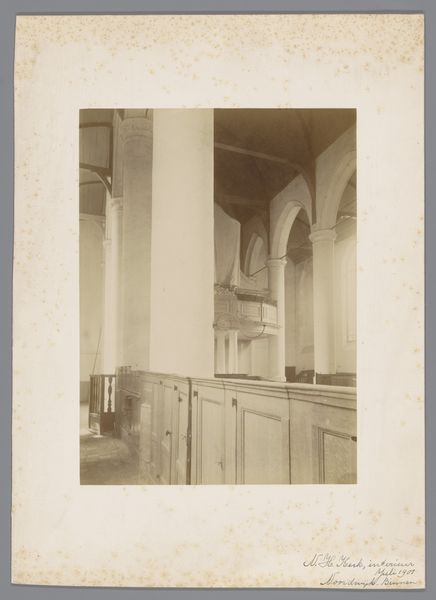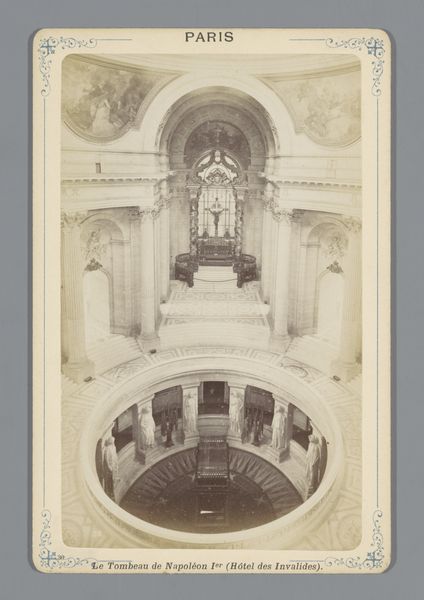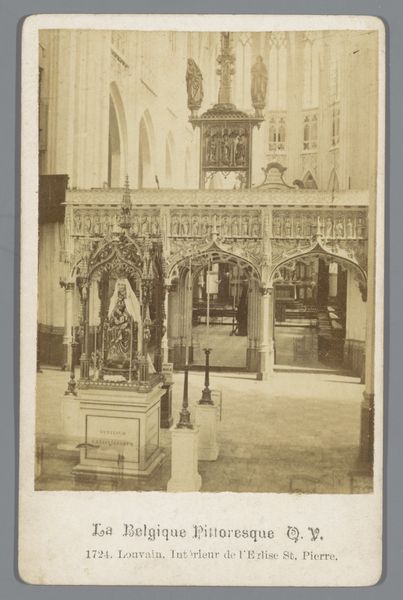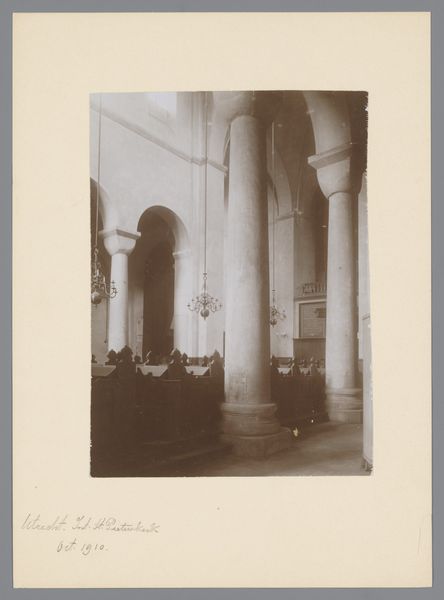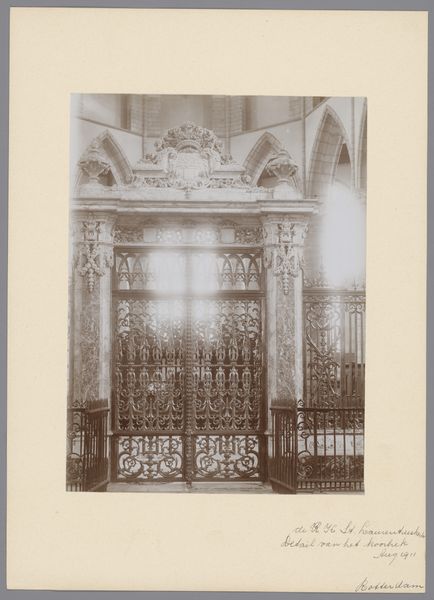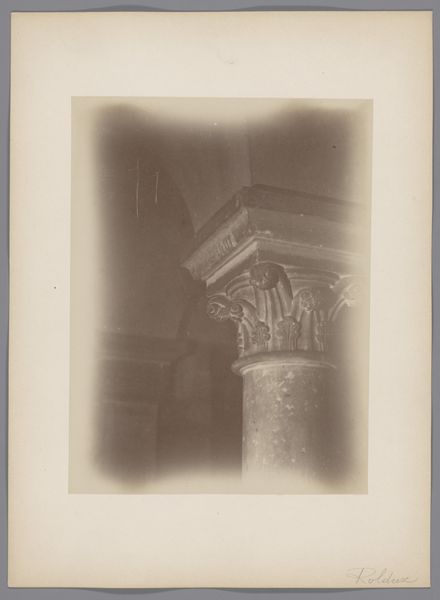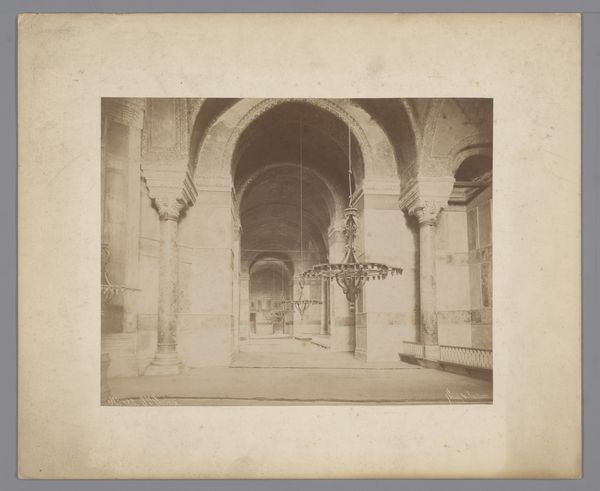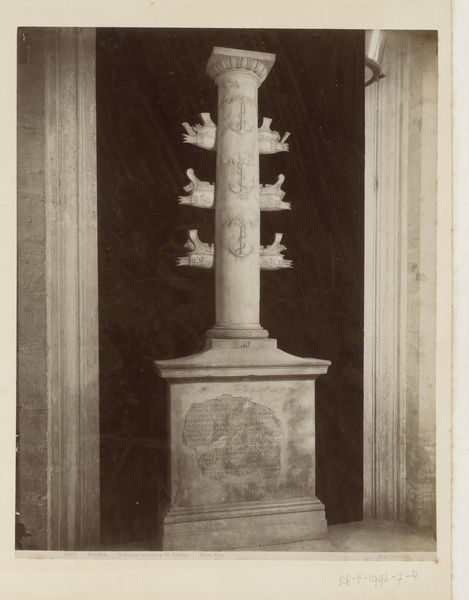
print, photography, site-specific
# print
#
photography
#
column
#
site-specific
Dimensions: height 354 mm, width 238 mm
Copyright: Rijks Museum: Open Domain
Curator: What immediately strikes me is the weight of history imbued within this sepia photograph of a column, situated inside the Saint-Julien-le-Pauvre church in Paris. It feels as if the image itself is a relic. Editor: Yes, there's a certain melancholy to it, almost a yearning. Looking at the physical print, though, I'm intrigued by the material itself. We're looking at a photograph, dating roughly from 1875 to 1900, documenting something decidedly site-specific. How interesting that photography was being utilized in the late 19th century to capture and, in some ways, disseminate architectural presence! Curator: Precisely. Saint-Julien-le-Pauvre has always been at the center of transitions and transformations; once a Roman road, then a Merovingian burial ground, a chapel, a priory… The column is therefore not just a structural support but a symbolic pillar holding up centuries of spiritual and societal shifts. Editor: And what of the labor involved in extracting and shaping the stone? Think of the quarries, the tools, the sheer manpower. These columns weren’t simply imagined; they were materially brought into existence through intense physical effort, reflecting specific economic and social dynamics. Curator: You’re right to point to the physical process of the column’s making, but its presence in a sacred space elevates it, transforming that manual labor into a testament of faith. It's a connection to something greater. The image itself carries a hallowed sentiment, with the columns alluding to principles and serving to elevate one’s perspective to what may come about. Editor: Yet, isn’t there a tension? Here’s a photograph, a readily reproducible image, documenting something unique and handmade. Photography, at that time, also brought about social revolution. The democratization of imaging contrasts so heavily with the exclusivity of what it depicts. A paradox, isn't it? Curator: That is the heart of cultural memory: images give us access to moments otherwise lost, they echo with symbolic resonance over time, and can elicit an awe for both the materials at hand, and what could be beyond what our eyes perceive. Editor: I agree; the photograph itself is an artifact documenting not just a physical structure, but also a moment in time when industrial production intersected with age-old architectural practices. I am grateful that we can analyze both today.
Comments
No comments
Be the first to comment and join the conversation on the ultimate creative platform.
